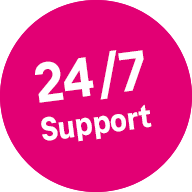Here you will find an overview of all community resources that you need to unlock the full potential of the Cloud.
Take advantage of our consulting services!
Our experts will be happy to help you.
Hotline: 24 hours a day, seven days a week




